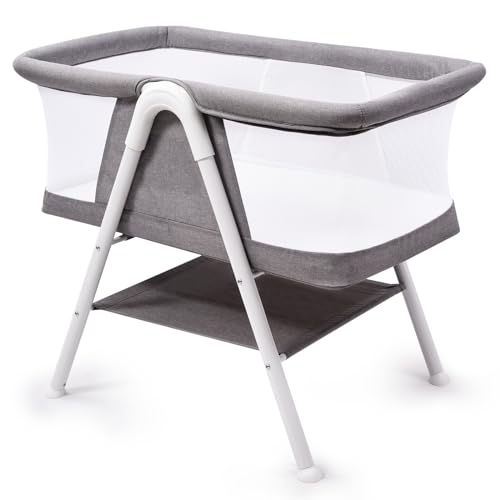Transitioning from Baby Cot to Bed: A Comprehensive Guide for Parents
The journey from a baby cot to a bed marks a considerable milestone in a kid's advancement. It represents independence and an action toward growing up. However, this transition can often be daunting for both parents and children. Comprehending the process, the right timing, and how to make the shift smoother can considerably help in this journey. This short article checks out the basics to consider when transitioning your child from a cot to a bed, consisting of common FAQs, tips, and a structured strategy to make sure the process is as seamless as possible.
Why Transition from a Cot to a Bed?
Developmental Milestones
Transitioning to a bed is normally prompted by numerous factors:
- Physical Growth: As children grow, they outgrow their cots. The typical size for a convertible cot is usually indicated for babies approximately 3 or 4 years old.
- Cognitive Development: As toddlers end up being more curious and conscious of their environments, they might attempt to climb up out of their cots, posing safety risks.
- Potty Training: Once a child is potty trained, they may require much easier access to the bathroom, which a bed can assist in.
- Brother or sisters: The arrival of a brand-new brother or sister can likewise require this transition, as the cot may need to be maximized.
When to Make the Transition
There is no one-size-fits-all response to when a child should transition from a cot to a bed. Nevertheless, here are some signs that it may be time:
- Climbing Out: If the child is attempting to climb up out regularly.
- Age Consideration: Many specialists advise this transition around the age of 2 to 3 years, although every child is unique.
- Required for Independence: Children may express a desire for a big-kid bed.
Kinds Of Beds Suitable for Toddlers
Not all beds are developed equal when it pertains to young kids. Here's a breakdown of ideal bed types:
| Bed Type | Description | Pros | Cons |
|---|---|---|---|
| Young child Bed | Smaller, lower to the ground, typically with side rails. | Size-appropriate for toddlers; stability. | Restricted life expectancy as they grow out of quickly. |
| Single Bed | Standard size bed suggested for older children. | Lasts longer; can be utilized for years. | Might be too huge for a toddler; danger of falling. |
| Convertible Crib | Crib that changes into a young child bed. | Versatile; conserves money in the long run. | Can be pricey; some might not offer full-sized choices. |
| Loft Bed | Raised bed with area below for play or storage. | Makes the most of area; fun for kids. | Not appropriate for extremely young kids; safety concerns. |
Actions to Transition Smoothly
Transitioning to a bed can be made easier with cautious planning. Here's a detailed guide:
1. Prepare the Space
- Select a Location: Decide where the bed will be put.
- Childproof the Room: Since children are naturally curious, make sure that furnishings is steady, sharp edges are covered, and hazardous items are out of reach.
- Keep Familiar Items: Retain favorite toys and bed linen to use convenience in the brand-new environment.
2. Present the Bed
- Involve Your Child: Let your kid assistance select out their bed or bed linen to develop enjoyment.
- Explain the Transition: Make them understand that they are ending up being a huge kid by having a big-kid bed. Usage encouraging language.
3. Make the Swap
- Bedtime Routine: Keep the bedtime routine constant. This creates familiarity and convenience throughout the transition.
- Support: Offer them reassurance but avoid being extremely protective; it's essential to encourage self-reliance.
4. Address Fears and Concerns
- Talk About Fears: Children may have fears of falling or the dark; talk about these honestly.
- Reinforce Safety: Use guard rails on the bed initially and explain what to expect throughout the night.
5. Monitor and Adapt
- Be Patient: It might take some time for your child to adjust completely.
- Stay Consistent: Maintain the nighttime routine, even when problems occur.
Frequently Asked Questions Regarding Transitioning from Cot to Bed
Q1: How long does the shift from a cot to a bed usually take?
A1: The transition can vary substantially among children-- ranging from a few days to a couple of weeks-- as they adjust to sleeping in a brand-new space.
Q2: Should I buy a special young child bed?
A2: Investing in a toddler bed can make the transition simpler since they are designed with safety in mind; however, if you choose to go directly to a single bed, that can work too with the right precaution.
Q3: What if my child keeps rising?
A3: This is regular! Encourage them to remain in bed and establish favorable reinforcement by rewarding them for remaining in bed through the night.
Q4: Is it fine to shift to a huge bed too early?
A4: Transitioning too early can result in sleep disruptions. It's vital to assess the preparedness of the child based on their indications and development.
Transitioning from a baby cot to a bed is a significant action for both kids and moms and dads. With thoughtful preparation and understanding of the child's needs, moms and dads can make the shift smoother and more enjoyable. By recognizing when to make the transition, comprehending the types of beds offered, and keeping a constant regimen, moms and dads can alleviate worries and cultivate a sense of security for their kid throughout this amazing brand-new chapter. Ultimately, Baby Cots is different, and patience is type in making this journey a positive experience.

